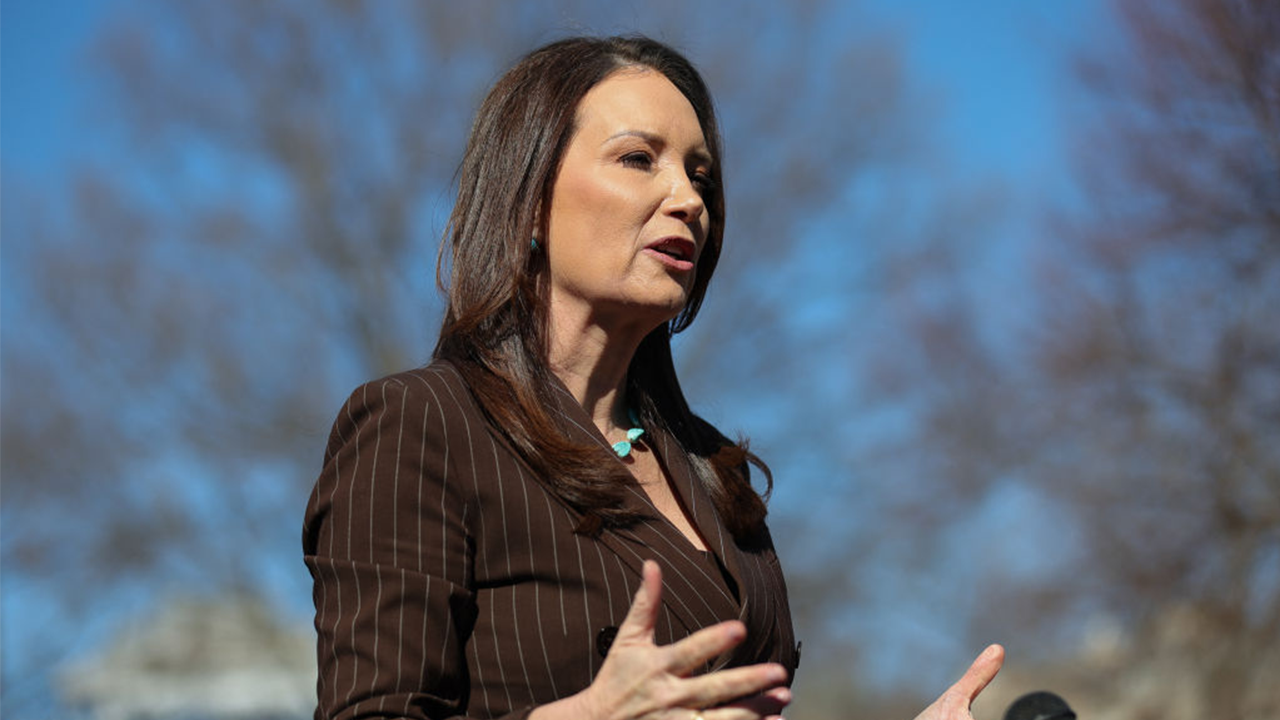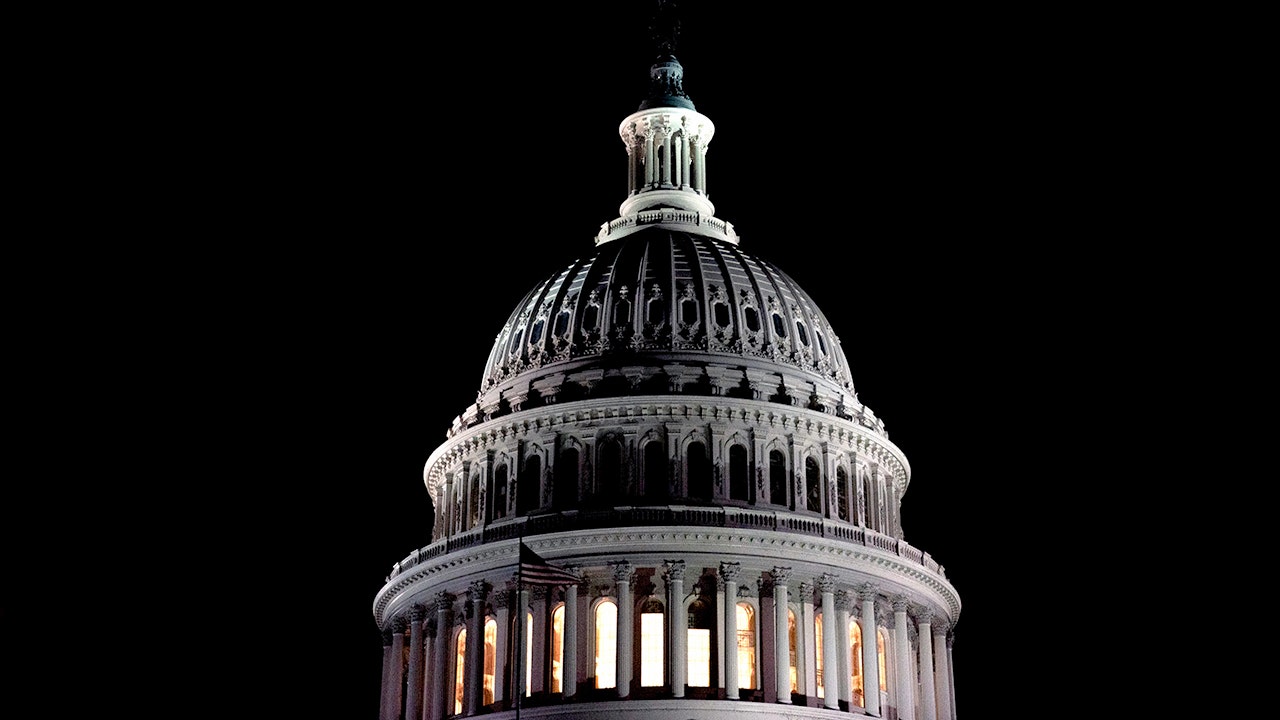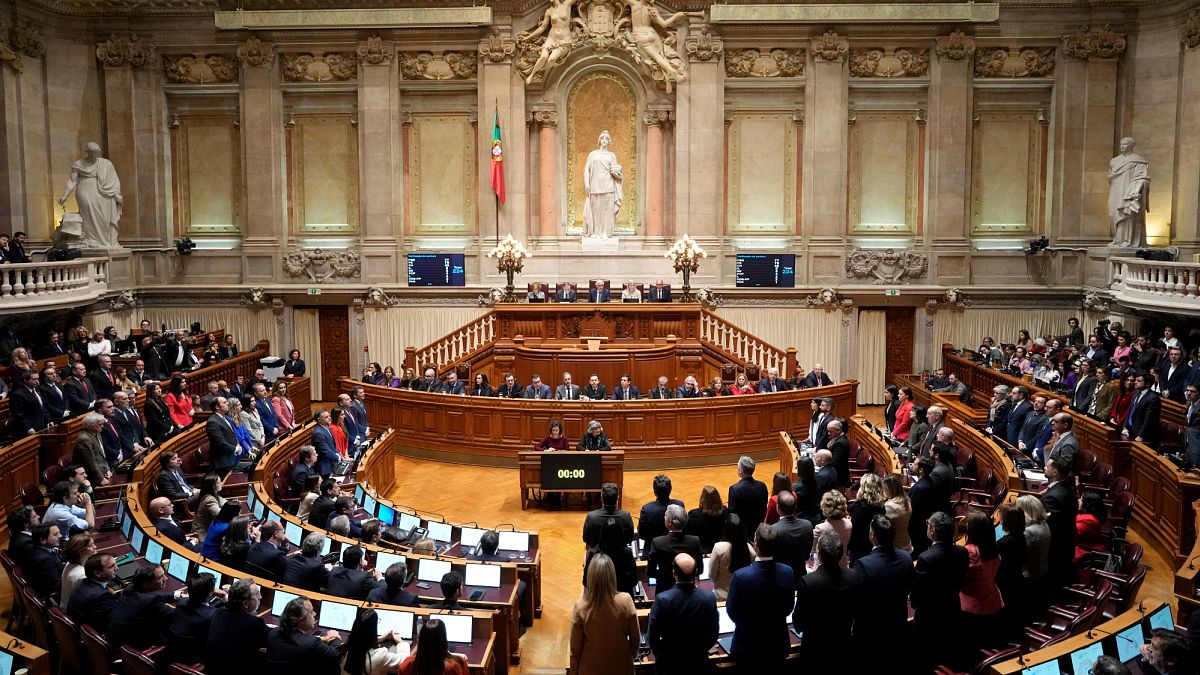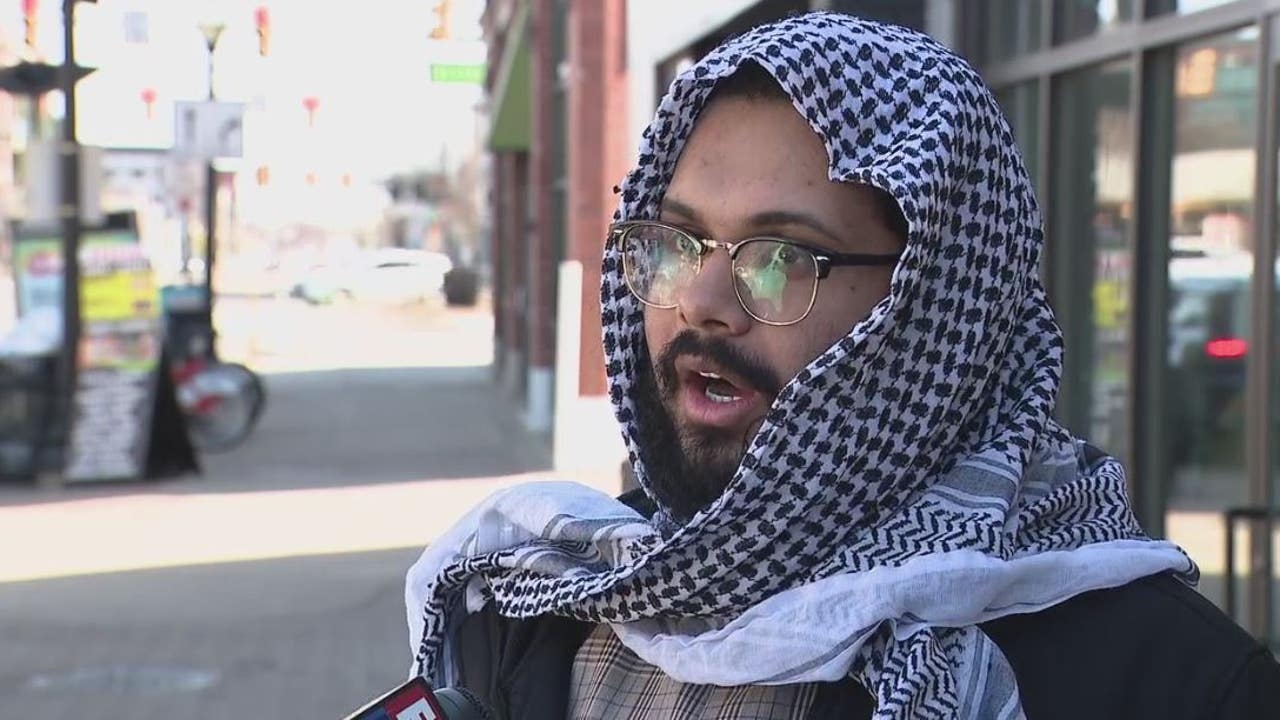Entertainment
For TV reporters covering fires in L.A., the tragedy gets personal

Jacob Soboroff, a national correspondent for NBC News with deep roots in the community, showed viewers the remains of his family’s former home on Frontera Drive in Pacific Palisades.
This week, Soboroff visited the site of a nearby playground where he romped as a child. His father, longtime civic leader Steve Soboroff, had led the effort to renovate the recreation facility after it fell into disrepair. It was gone. The home of his pregnant sister’s in-laws, where she was staying during her own home’s renovation, was also leveled.
Soboroff no longer lives in Pacific Palisades. But he knows its now-unrecognizable streets as well as if he had a Google map in his head, he told The Times.
“The pictures don’t match the muscle memories,” he said. “I grew up here and we’d do … drills in school for an earthquake. It looks like what the city would look like after the Big One, not after a wildfire.”
Those feelings are now all too familiar. The world watched as large parts of the Los Angeles area burned this week, giving ample TV time to the national correspondents based in the city.
The stunning devastation that engulfed Pacific Palisades, Altadena and other neighborhoods entered the national consciousness through wall-to-wall TV news coverage, overshadowing major news events such as the funeral of former President Carter and the sentencing of Donald Trump in his New York hush money case. The unprecedented inferno filled screens with shocking images since Tuesday.
Often the biggest challenge for the L.A.-based journalists, who worked around the clock since the blazes broke out, was coping with their own emotions, fears and feelings of loss as they reported on their home city’s transformation into scenes that resembled war zones.
Fox News correspondent Jonathan Hunt reported on the flames that encroached Palisades Charter High School, where his 17-year-old daughter is a student. While informing viewers about the threat, he privately worried she would be back to remote learning after losing a year in the classroom during the pandemic.
Fox News Senior Correspondent Jonathan Hunt reporting on the wildfires that leveled Pacific Palisades.
(Fox News)
Hunt was relieved that the school “was largely OK,” but local landmarks where he spent time with his children were wiped out.
“I was just wandering around the village area just now and much of the retail is gone,” he said. “The Starbucks we used to stop at so many days after school is just gone.”
Longtime CNN correspondent Nick Watt told viewers on Wednesday how after he finished his reporting he was headed to his home in Santa Monica to hose it down, hoping it would deter embers from starting a blaze.
“It’s extraordinary to cover something like this in your own community,” he said. “I’ve been covering fires for a long time. You have sympathy for people. Now I have empathy.”
Correspondents said they were deluged by West Coast-based colleagues, friends and strangers asking them to check if their homes were still standing.
Soboroff noted that having his reports stream on NBC News Now and social media sites such as TikTok brought in requests from around the world. In some cases, he didn’t have to check, knowing that whole blocks in Pacific Palisades were in ruins.
Hunt received inquiries as well, and went a step further for Kennedy, a former MTV host who is now a contributor at Fox News.
Kennedy, who was in New York, asked Hunt to enter her Palisades home, located less than 100 yards from structures that were gutted by the flames. She wanted him to gather certain framed family photographs and drawings made by her children. Hunt entered the undamaged structure, where he also retrieved a sword one of Kennedy’s relatives saved from World War I.
“I was dreading the idea of going to this friend’s house and having to send a photo of rubble,” Hunt said. “Thank God that I didn’t.”
Nancy Loo, a veteran Los Angeles-based reporter for NewsNation, was on the case Tuesday morning as she and her camera operator Nathan Fiery had covered numerous wildfires along the West Coast since she joined the network in 2020. They started traveling toward the blaze when they saw smoke in the direction of Culver City.

NewsNation’s Nancy Loo covering the wildfires in Pacific Palisades.
(NewsNation)
Loo joined NewsNation so she could be closer to family members, who she said were spared from the danger and destruction. But Fiery had been evacuated from his Hollywood Hills home and worked with the fear that it would be gone. (It was spared.)
Loo made her bones as a local New York anchor who reported for eight hours straight during the 1993 bombing of the World Trade Center. She moved on to become a reporter on Chicago’s WGN, where she frequently started her day covering a homicide that occurred overnight.
The destruction of Pacific Palisades is yet another traumatic scene she has to process, one of many over a long career.
“I’ve learned to compartmentalize because it does take an emotional toll,” Loo said.

Movie Reviews
Black Bag

Movie Review
George Woodhouse doesn’t like liars. Shame he works with so many of them.
You see, George is an intelligence agent for the British government. A spy. And spies are in the business of keeping secrets—often lying to do so. But a spy’s job isn’t just about keeping secrets. It’s also about discovering them.
George is on the discovery side of spy craft. He’s become something of a legend for his skill in digging up dirty little secrets. He seems to know vices of everyone within his world, be they an intelligence target, a coworker or a family member.
All except Kathryn. She’s a formidable spy in her own right. A master of deception. An adept at espionage.
She also happens to be George’s wife.
Kathryn and George have a happy and committed marriage. They artfully navigate the relational pitfalls that accompany a profession such as theirs. Pitfalls that many of their colleagues have fallen into headlong. (George has the evidence to prove it.)
George adores Kathryn and trusts her implicitly. That’s why when a top-secret government weapon is stolen, and Kathryn is on the list of potential traitors, George hardly gives it a second thought. She wouldn’t betray her country, he thinks. More than that, she wouldn’t betray him. And there are plenty of other suspects.
But as the methodical George scrupulously searches for the truth, all evidence points to Kathryn as the culprit. Everything is called into question. Could his wife be a traitor? If so, does he even know her at all?
“When you can lie about everything,” George’s coworker muses about the effect of their clandestine profession, “how can you tell the truth?”
George Woodhouse doesn’t like liars. Shame he might be married to one.
Entertainment
Review: An accidental hero feels no pain in 'Novocaine,' a brutal yet weightless action-comedy

The unwieldy action rom-com “Novocaine” makes a convincing argument that its lead, Jack Quaid, can do it all: woo the girl, shoot the goon and tickle the audience. The movie itself has a harder time, screwing its three genres together so awkwardly that it tends to limp. Directed by Dan Berk and Robert Olsen from a script by Lars Jacobson, it’s about a San Diego assistant bank manager named Nathan Cane (Quaid) with congenital insensitivity to pain — a rare and real condition in which a person can’t feel cuts, burns, bruises and broken bones. All of the above injuries (and more) happen to Nathan after his workplace crush Sherry (Amber Midthunder) gets kidnapped by bandits. He’s no ass-kicking gym rat; he’s simply willing to take any punishment to get her back.
How seriously should we take this premise? Very, according to the grisly blood splatters, the ham-fisted dramatic score and the panic in Midthunder’s eyes. Also, not seriously at all, gauging from the comic relief that’s haphazardly bolted onto the plot, such as a cop played by Matt Walsh who gripes that San Diego’s gone to seed ever since “the Chargers and the Clippers betrayed us.”
Of the torment Quaid endures, his hardest challenge is straddling the tone. He’s charmingly chipper while being shredded to machaca. “It’s fine!” he insists, as a knife plunges through his hand. “Good to go!” he says, carving a bullet out of his arm with a box cutter. Our vicarious shudders come only from the sound design, which gives a horrific squelch to the shock of a medieval mace slamming into Nathan’s back. (“Why?” Nathan sighs with exasperation, as though he’s merely gotten stuck at a red light.)
The slapstick works, particularly when Quaid does a Chaplin-esque shuffle with an arrow sticking out of his thigh. But what works better is the opening act, a kooky but sincere indie romance that only has a few scenes to convince us that Nathan’s chemistry with Sherry is worth putting himself through a meat grinder. Nathan looks like a typical sad sack — drab apartment, droopy corporate wear, anxious forehead crinkle — with the twist that he’s been raised to be terrified of everything, from scalding himself in the shower to accidentally chewing off his own tongue. (Production designer Kara Lindstrom establishes a life story of injuries by sticking tennis balls onto every sharp corner of his furniture.) At work, this isolated oddball shows empathy to a cash-strapped widower (Lou Beatty Jr.), proof that he at least feels emotional pain. Still, he’s caught completely off-guard when the office cutie scalds him with coffee (no biggie) and then apologetically asks him to lunch (yikes).
Sherry comes on so strong, we want her checked for Hollywood’s chronic disease: manic pixie dreamgirl syndrome. To the script’s credit and Midthunder’s convincing zeal, Sherry has her own motives for making it work, including a need to stick up for the weak. And we have a question we’re hoping she can answer: If Nathan can’t feel pain, how can he feel pleasure? When Sherry prods him to take his first bite of solid food, Quaid does for the cherry pie what his real-life mother Meg Ryan once did for the pastrami sandwich. His eyes flutter in ecstasy. He’s in love.
Even knowing that this ridiculously charming setup will take a sharp veer into blood and guts, the dramatic tonal change still hits us like a kick to the head. Once a trio of robbers (Ray Nicholson, Conrad Kemp and Evan Hengst) barges into Nathan and Sherry’s bank and quickly and coldly murders four people, the movie doesn’t have any more swoon-worthy moments in it other than Nathan defibrillating himself so that he can keep on going. Midthunder’s character gets especially robbed. She may as well be John Wick’s puppy.
Co-directors Berk and Olsen spend the rest of the film trying to make a spiritual sequel to Jason Statham’s “Crank,” the ultimate whackadoo action flick about an assassin who pumps himself up to stay alive (bested only by its sequel, “Crank 2: High Voltage”).
Quaid doesn’t have Statham’s biceps, but for my money, he doesn’t need them. He has the perfect look for this movie. Lean and rumpled in unusual places, he’s half-twerp, half-man. Smartly, the stunt choreography doesn’t position its protagonist as a super fighter. The gasps come not from his skills, but from what he’s willing to do to win: grind glass into his fists, grab a scorching cast-iron skillet without mitts, plunge his right hand into a deep fryer until it blisters like a samosa. There’s an extended squeamish groan when, having seized and fired a boiling gun, it doesn’t occur to him to drop it. Visually, the violence is shot in sickening close-ups. Cartoonish horseplay would have gotten a hardier laugh.
The camera hurls itself into the high jinks, slamming itself back and forth at the same cadence as Nathan’s concussions. But it’s more fun watching him take abuse than dole it out. When this sweetheart goes on the attack, the effect is like watching a bunny with rabies. You’re just thinking someone should take the poor dear to the doctor. (Meanwhile, the directors mistakenly think we’ll enjoy it more in slow-motion.) Even in the moments designed for cheers, like when Nathan destroys a bad guy’s swastika tattoo, you don’t really want that agony on his conscience.
Which is why the best fight scene involves psychological combat. A tied-up Nathan tricks his executioner into giving him extra time to figure out an escape by going full Br’er Rabbit, pretend-begging the killer to get his torture over with fast. “Not the pliers — please, not the pliers,” he pleads. Let me try that myself. Don’t put Quaid in a romantic comedy — please, not a proper romantic comedy.
‘Novocaine’
Rated: R, for strong bloody violence, grisly images, and language throughout
Running time: 1 hour, 50 minutes
Playing: In wide release Friday, March 14
Movie Reviews
The Last Supper (Christian Movie Review) – The Collision

Verdict: A decent but unexceptional adaptation of the greatest story ever told; while The Last Supper isn’t groundbreaking, it should still satisfy audiences looking for a new cinematic way to meditate on the familiar gospel story this Easter season.
About the Film
Mel Gibson’s The Passion of the Christ (2004) was a monumental cinematic event. Two decades later, Jesus is thriving in Hollywood. With the mega-hit series The Chosen, Angel Studios’ upcoming animated feature King of Kings, and various other adaptations, there’s a “Jesus movie” for everyone these days. In a now-crowded genre, The Last Supper struggles to distinguish itself in any memorable way beyond simply offering “more Jesus” (not that many Christians are likely to bemoan having “too much Jesus” in their entertainment). The Last Supper offers a decent but unexceptional adaptation of the greatest story ever told; the film isn’t groundbreaking, but it should satisfy audiences looking for a new cinematic way to meditate on the familiar gospel story this Easter season.
Movies about Christ should never get a free pass on quality. Yet in several fundamental ways, they are not really like any other movies. More than offering mere popcorn-munching entertainment, The Last Supper serves a more sacred and worshipful function. (For more on the purpose of the film, you can check out my interview with Chris Tomlin and Michael Scott, CEO of Pure Flix and Pinnacle Peak Pictures).
From a purely cinematic perspective, The Last Supper forgoes many of the pillars of moviemaking (three-act plot, character development, etc.). The film presupposes that the audience already has an emotional attachment to the story and the characters. Despite some end credits title cards offering a gospel pitch, I’m not sure the film really works as an evangelistic experience. Instead, The Last Supper is primarily geared toward audiences who are looking for a fresh perspective on a narrative they know well.

The film tells the story from the point of view of the disciples, not Jesus. Judas Iscariot is present in all gospel retellings, but he has rarely (if ever) been given a central role. The Last Supper juxtaposes Judas with Peter, fleshing out their storylines to demonstrate their parallel (but ultimately diverging) paths. The film attempts to “humanize” the characters and explores Judas as a friend and member of the disciples, not merely as the man destined to betray Jesus.
Most Jesus films focus on the crucifixion and the resurrection, but this one dwells on the Last Supper and explores the religious roots of the Passover feast. For Christians who regularly partake in communion, there is value in meditating on its historical context. At times, the film is a bit clunky in how it handles this exploration, such as when a character explains the function of the blood painted over the door for Passover, exposition clearly included for the audience’s sake since Jewish characters would presumably already know the backstory.

For the most part, the film doesn’t alter the biblical narrative. It simply expands the story around the edges and fills in the gaps. As far as I could tell, most (if not all) of Jesus’ dialogue was taken directly from the Bible (which I appreciated, as I’m uncomfortable with filmmakers attributing their own words to Christ).
In other areas, the film goes beyond recorded Scripture. The relationship dynamic between Peter and Judas is interesting, but it is original to the film, as is much of the dramatization of Judas being tormented and tempted by Satan. One of the most glaring additions is that rather than having Peter strike a servant with a sword and cut off his ear (John 18:10), a mini battle ensues between the disciples and the soldiers. The scene offers another unfortunate example of filmmakers including unnecessary Hollywood action rather than elevating the compelling dramatic tension already present in the biblical text (see also Netflix’s Mary).
While not always the focal character, Jesus remains the story’s pivotal figure. Depicting the hypostatic union (Christ as both “fully God” and “fully man”) is cinematically impossible, and adaptations usually emphasize one aspect over the other. In some ways, The Last Supper offers a more reverent—at times, even “distant”—adaptation of Jesus than the more human version portrayed in shows like The Chosen. Though there are moments when Jesus appears surprisingly earthly and vulnerable in ways I didn’t always appreciate. For example, the “cleansing of the temple” (Mark 11:15-18) narrative is depicted more as Jesus losing control and throwing a tantrum rather than as a righteous, purposeful anger.
While Hollywood mainstays like Star Wars and Marvel are faltering, biblical adaptations are on the rise. A byproduct of faith-based entertainment’s newfound success is that Christian viewers have plenty of options. The Last Supper doesn’t feel like an essential contribution to the genre, but that’s not to say that it is without merit. Familiarity can breed apathy, and there is power in approaching the gospel from subtly difference perspectives. At a time when films like Anora are celebrated as the best Hollywood has to offer, having a little more Jesus sprinkled into our entertainment isn’t a bad thing.
On the Surface
For Consideration
On the Surface—(Profanity, Sexual content, violence, etc.).
Language: None.
Violence: Peter cuts off a servant’s ear, and the severed ear is visible, although there is no blood. The crucifixion is not shown, only Jesus already hanging upon the cross. Judas hangs himself and is shown dangling from the rope (from the chest down).
Sexuality: None.
Beneath The Surface
Engage The Film
Grace and Forgiveness

As an adaptation of the gospel, the film’s themes largely align with those of the biblical narrative itself—Jesus’ love, grace, and salvation. More specifically, the film attempts to unpack the similar experiences of Peter and Judas. Despite having spent years as followers of Jesus, arguably both characters’ most famous deed was denying their Lord. The film depicts both characters under the torment of Satan, who preys on their fear and guilt. Whereas Judas ultimately succumbs, Peter finds forgiveness and is restored.
Another theme the film’s producers specifically highlighted in my interview with them is the importance of the table. As many Christians partake in communion at church, the significance of the table has been somewhat forgotten. But there is power in being reminded that Jesus instituted the ritual while sitting around a table in intimate fellowship with friends. The Last Supper reminds audiences that the ultimate purpose of communion is not just to remember that Jesus died on the cross on our behalf but to dwell on the beautiful truth that he sacrificed himself to bring us back into a deep, loving fellowship with him.
-

 Politics1 week ago
Politics1 week agoEXCLUSIVE: Elon Musk PAC thanks Trump for 'saving the American Dream' in new million-dollar ad
-

 News6 days ago
News6 days agoGene Hackman Lost His Wife and Caregiver, and Spent 7 Days Alone
-

 Politics6 days ago
Politics6 days agoRepublicans demand Trump cut American legal association out of nominee process
-

 Politics6 days ago
Politics6 days agoAgriculture secretary cancels $600K grant for study on menstrual cycles in transgender men
-

 News6 days ago
News6 days agoStates sue Trump administration over mass firings of federal employees
-

 Movie Reviews1 week ago
Movie Reviews1 week ago‘Black Bag’ Review: Cate Blanchett and Michael Fassbender Cozy Up in Steven Soderbergh’s Snazzy Spy Thriller
-

 News1 week ago
News1 week agoWho Paid for Trump’s Transition to Power? The Donors Are Still Unknown.
-

 News6 days ago
News6 days agoTrump Seeks to Bar Student Loan Relief to Workers Aiding Migrants and Trans Kids

















